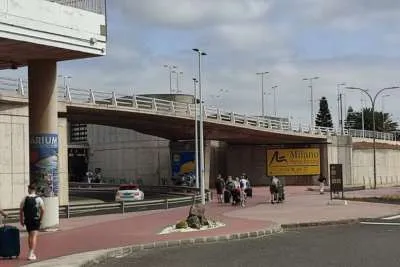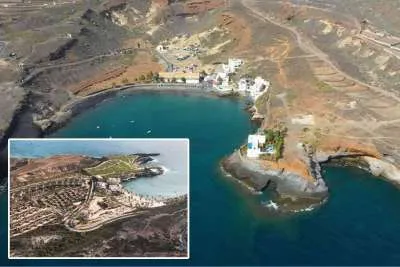Fuerteventura's Future: British airline's new direct routes spark tourism race in the Canary Islands
- 14-12-2023
- Fuerteventura
- Canarian Weekly
The Canary Islands are very popular, and for good reason. Featuring one of the best climates on the planet, they offer a lot of natural diversity and serve as a great place to escape the winter months each year. While Fuerteventura hasn’t had quite the same success in attracting tourists as some of the other islands, a recent announcement from British Airways has the potential to shake things up.
British Airways’ Expanded Routes
Starting in November 2023, British holidaymakers can now fly directly from London to the sun-soaked shores of Fuerteventura, with fares beginning at an inviting £65 each way. The service will run through March 2024, providing ample opportunity for those looking to escape the cold.
The addition of Fuerteventura to BA’s destinations is notable, given that direct connections from major airlines to less mainstream islands like this one are not commonplace. Historically, most carriers have instead focused on routes connecting larger tourist hubs like Tenerife and Lanzarote, which have traditionally attracted higher numbers of tourists.
It remains to be seen what will happen after March 2024, but it’s hard to see this move not being a success. The Canary Islands already receives over 10 million visitors from the UK each year, and that figure is likely to continue rising in the coming years.
Tenerife’s Dominance
There are seven main Canary Islands in total, and four of them receive the overwhelming majority of visitors. Of those four, Tenerife is the clear number one, bringing in over five million tourists each year. It has major attractions like Mount Teide National Park, and it’s known for having an exhilarating nightlife.
The other islands have a lot going for them, too. Gran Canaria is home to stunning dune-filled beaches and busy resorts, while Lanzarote captivates tourists with its otherworldly volcanic terrain. Even the less-visited La Palma has plenty of unspoiled nature to explore. Each island offers something a little bit different, but none have been able to match Tenerife’s economic impact just yet.
So, why does Tenerife lead the pack? It isn't merely by chance or simple geography. Instead, it’s due to a strong infrastructure that caters to tourists' needs all the way from arrival to departure. There has been a lot of work done over the years to promote an image of paradise, and that has resonated globally. It’s the first place people think of when they hear the name Canary Islands, and it’ll take some clever marketing from the other islands to catch up.

Fuerteventura’s Future
If Fuerteventura is going to make up some ground on Tenerife, it needs to capitalise on the decision made by British Airways. If other airlines could be encouraged to join BA in offering cheap flight deals to the island, it could very quickly become a boom for the tourism sector.
Frequent shuttles from El Matorral Airport could be offered, as well as other types of services that would make travel to the region as seamless as possible. As part of growing this connectivity, aiming to improve the links via sea could help to transform its accessibility even more.
One thing that will help a lot is that Fuerteventura already has a lot going for it. It’s the second biggest of the Canary Islands, has over 3,000 hours of sunshine each year, and a geography that’s distinct from its neighbours. All of this has already led to steady growth, but not at a pace fast enough to catch Tenerife or Gran Canaria.
The island already has UNESCO Biosphere Reserve status, and this is a unique selling point that could be leaned on more from a marketing perspective. As well as that, growing the number of cultural festivals on the island would be a good way to celebrate local culture and attract different types of tourists.
Given that what makes Fuerteventura special is its unspoiled nature, one potential problem that needs to be solved is scale. As more people travel to the island, more development will be needed. Making sure that this is done in as sustainable a way as possible is more important than anything.
The effects of British Airways' new direct routes will be interesting to keep an eye on. While they won’t change tourist behaviour completely on their own, they will put Fuerteventura on the map for a lot more people, and that can only be a good thing for the future.



























































